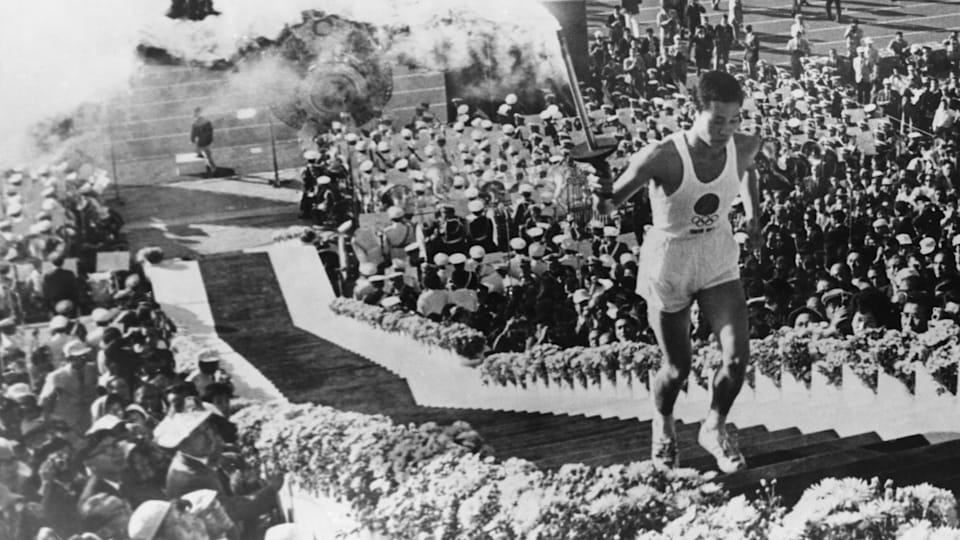Tokyo 1964: A golden legacy
Rising from the ashes of World War II, Japan staged Asia's maiden Olympic Games 56 years ago in groundbreaking fashion with its impact still felt throughout the country.

On 29 May 1959 in Munich, Tokyo was awarded the hosting rights to the 1964 Olympic Games.
Fifty-six years on, the legacy of those Games remains - clearer and louder than anyone could have imagined.
Winning the candidature - by more than triple the votes of runner-up Detroit - was more than about redemption for having been unable to stage the Games in 1940 as World War II intensified.
Or for Japan being barred from London 1948 due to its wartime actions. Or for losing the 1960 Games to Rome.
To this day in the Japanese capital, the Tokyo 1964 heritage is omnipresent. You can see it and feel it.
And next year, the legacy will get a new look with recovery - as fate would have it - a permeating theme once more at the second Summer Olympic Games in Tokyo.
Unlike Tokyo 2020 which will be held in midsummer, Tokyo 1964 was staged in the autumn from 10-24 October.
The day of the Opening Ceremony went on to become a public holiday - Sports Day - when each and every school nationwide holds a sports festival, a mini-Olympics if you like.
All for one, one for all
More than 5,500 athletes and delegates from 93 countries/regions participated in Asia’s first Olympic Games.
Twenty sports were held at 30 venues in five prefectures - Tokyo, Saitama, Kanagawa, Chiba and Nagano.
But Tokyo 1964 was about much more than sport.
It was an epic government project encompassing the entire country; a titanic vehicle that helped propel Japan from the ruins of WWII to the explosive economic growth of the 1970s and 80s and eventually turn the nation into a financial superpower.
The bill for organising the Games came to 26.5 billion yen (US$ 250 million) but an additional 960 billion yen (US$ 9 billion) was spent on related infrastructure which became a foundation for Japan's capital city and part of the daily fabric.
From the iconic Nippon Budokan to the architectural breakthrough that was the Yoyogi National Gymnasium.
Plus the shinkansen 'bullet train' high-speed network which would link Hokkaido in the north to Kyushu in the south; an intricate subway system that runs like clockwork; and a motor expressway linking Haneda International Airport to Tokyo's central districts.
It’s hard to imagine Tokyo life as we know it without the building blocks that were laid ahead of the 1964 Games.
A first time for everything
Just as Tokyo 2020 is writing a new playbook for the Olympic Games in a post-coronavirus world, Tokyo 1964 served as a blueprint for the organisation of a modern Games.
New ground was broken in broadcasting with Tokyo 1964 the first Games to be televised via satellite to a worldwide audience - believed to be between 600 million and 800 million viewers - setting a new norm for the times.
Slow motion also made its debut and television sets sold like hotcakes in Japan, reaching close to 90 per cent of homes and sparking the proliferation of colour TV.
Through the use of computers (a novelty back then), live statistics were kept for the first time.
This enabled records to be made official quickly, a procedure that had previously taken weeks or even months.
The technological advances meant that Tokyo 1964 was the last stand for hand timing with stopwatches, heralding the age of electronic/digital timing allowing for dramatic improvements in accuracy.
The Tech Race
A global exploration of the past, present and future of technology and science as applied to Olympic sports and athletes.
Sport as part of life
On the field of play, Japan had a 437-strong delegation - double that sent to the previous Games in Rome - with an athlete competing in every sport.
Determined to improve on their tally of four gold medals four years previously, the hosts of Tokyo 1964 went all-in on preparation, bringing together the government, scientists and experts in various fields under one roof at the Japanese Olympic Committee.
The result was 29 medals including 16 golds - the most ever by Japan at a single Games.
Japan's victory over the Soviet Union for gold in women’s volleyball, introduced to the Olympic programme alongside judo at these Games, was watched by a staggering 85 per cent of the domestic population.
The success of Japanese athletes sparked a post-Games sporting boom leading to creation of national leagues in the likes of football, volleyball, badminton and basketball.
These have developed into pyramidal professional-level competitions spawning generations of elite Olympic athletes.
Tokyo 1964 was Japan's first of many major international sporting events.
With a growing reputation for organisation, Japan has since hosted two Winter Olympic Games - Sapporo 1972 and Nagano 1998 - the 2002 FIFA World Cup Finals with the Republic of Korea, and the 2019 Rugby World Cup.
Exactly 56 years ago on 10 October 1964, Sakai Yoshinori - who was born on 6 August 1945, the day after the Hiroshima atomic bomb - lit the Olympic Cauldron before a deafening sell-out 85,000 crowd at the Opening Ceremony.
Emperor Hirohito declared the Games officially open.
Under clear blue skies at the old National Stadium, then International Olympic Committee President Avery Brundage said in his address: “The Olympic Movement, with its 118 National Olympic Committees, has now bridged every ocean.
"And the Olympic Games at last are here in the Orient, proving that they belong to the entire world."
Tokyo 2020 will aim to prove that solidarity again next summer amid one of the greatest challenges humanity has ever faced.
